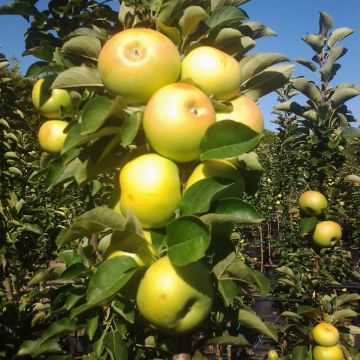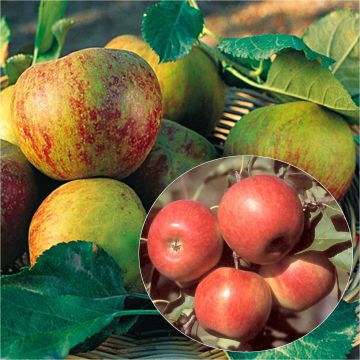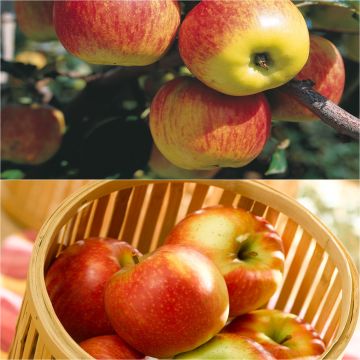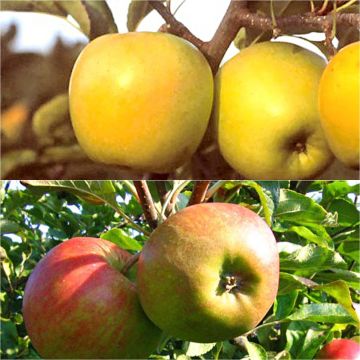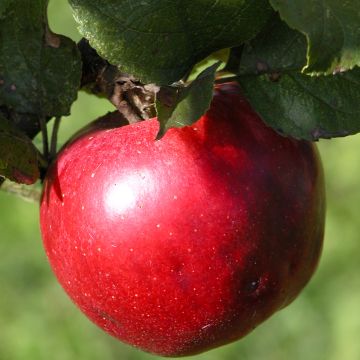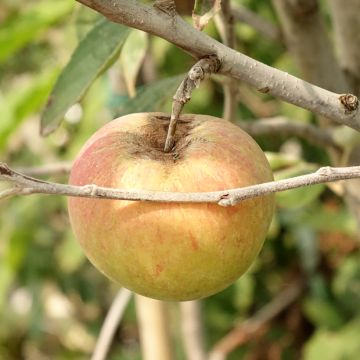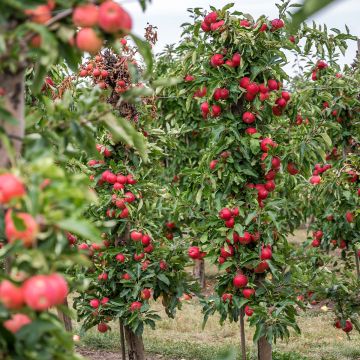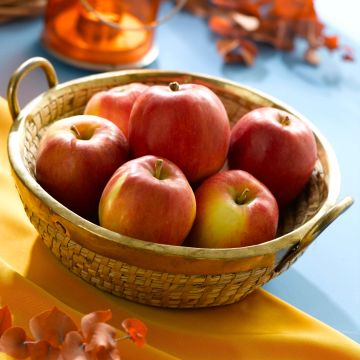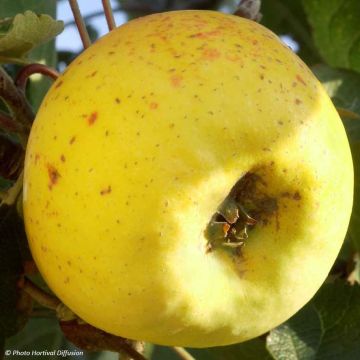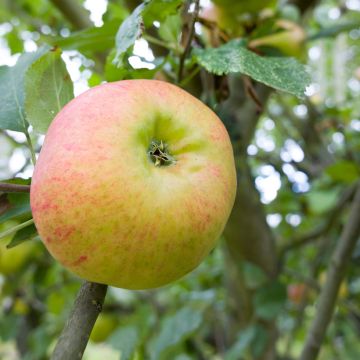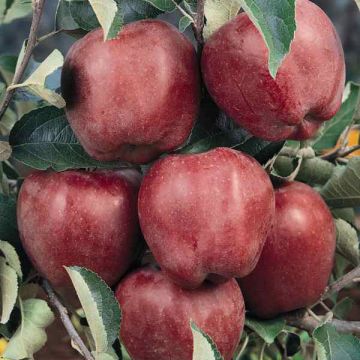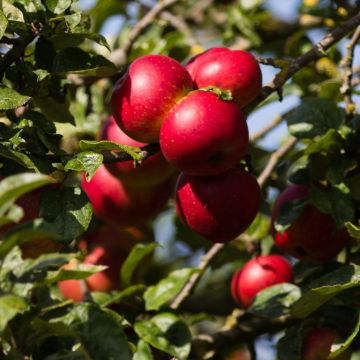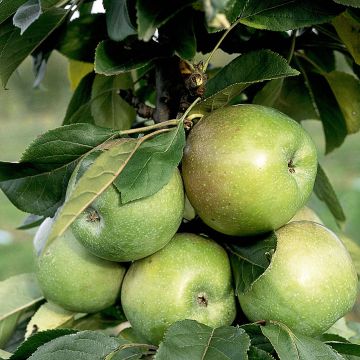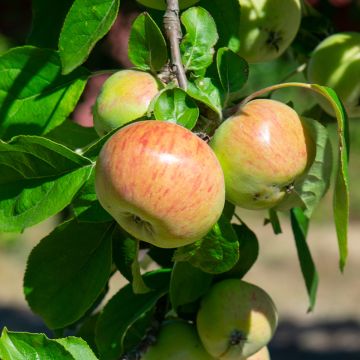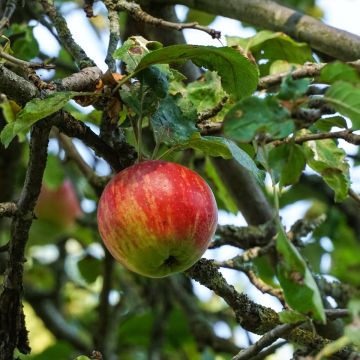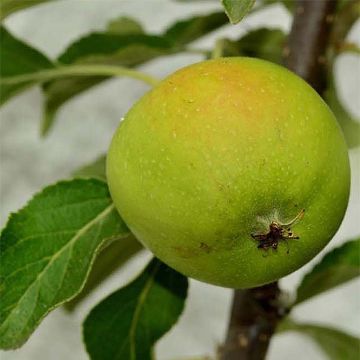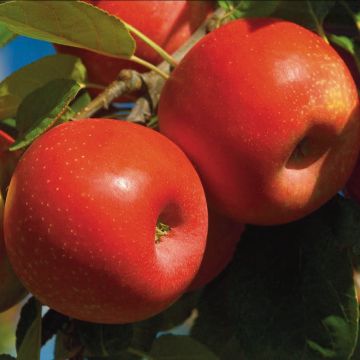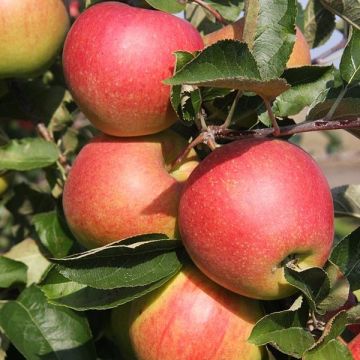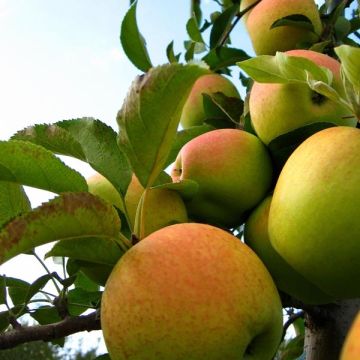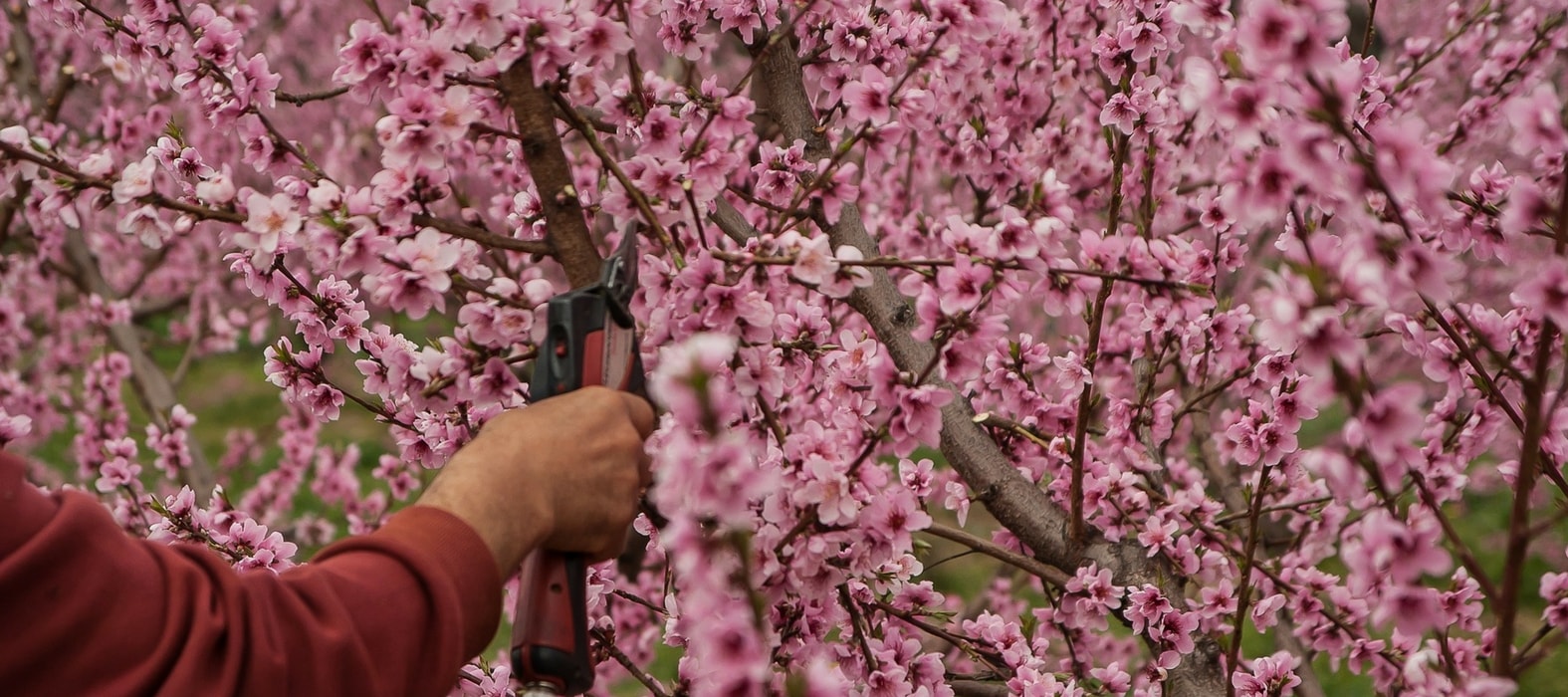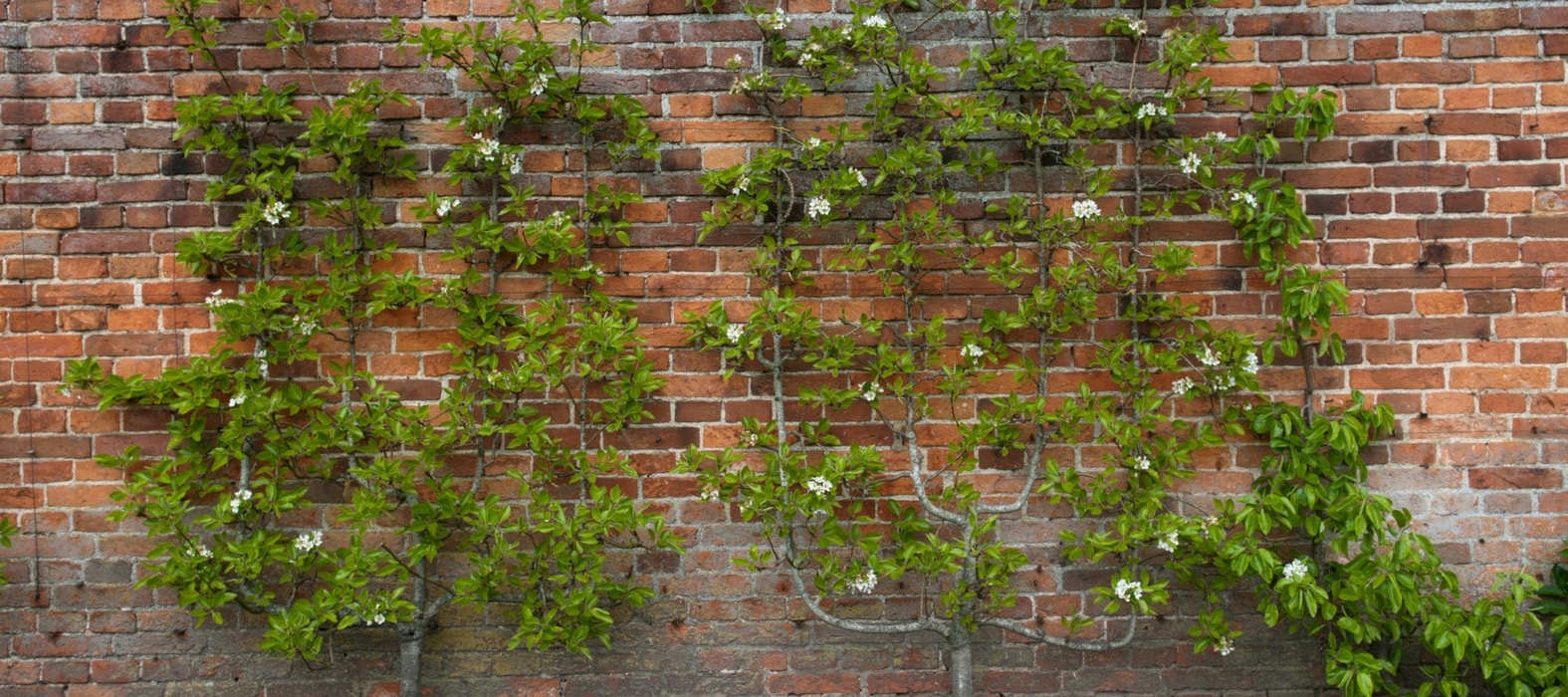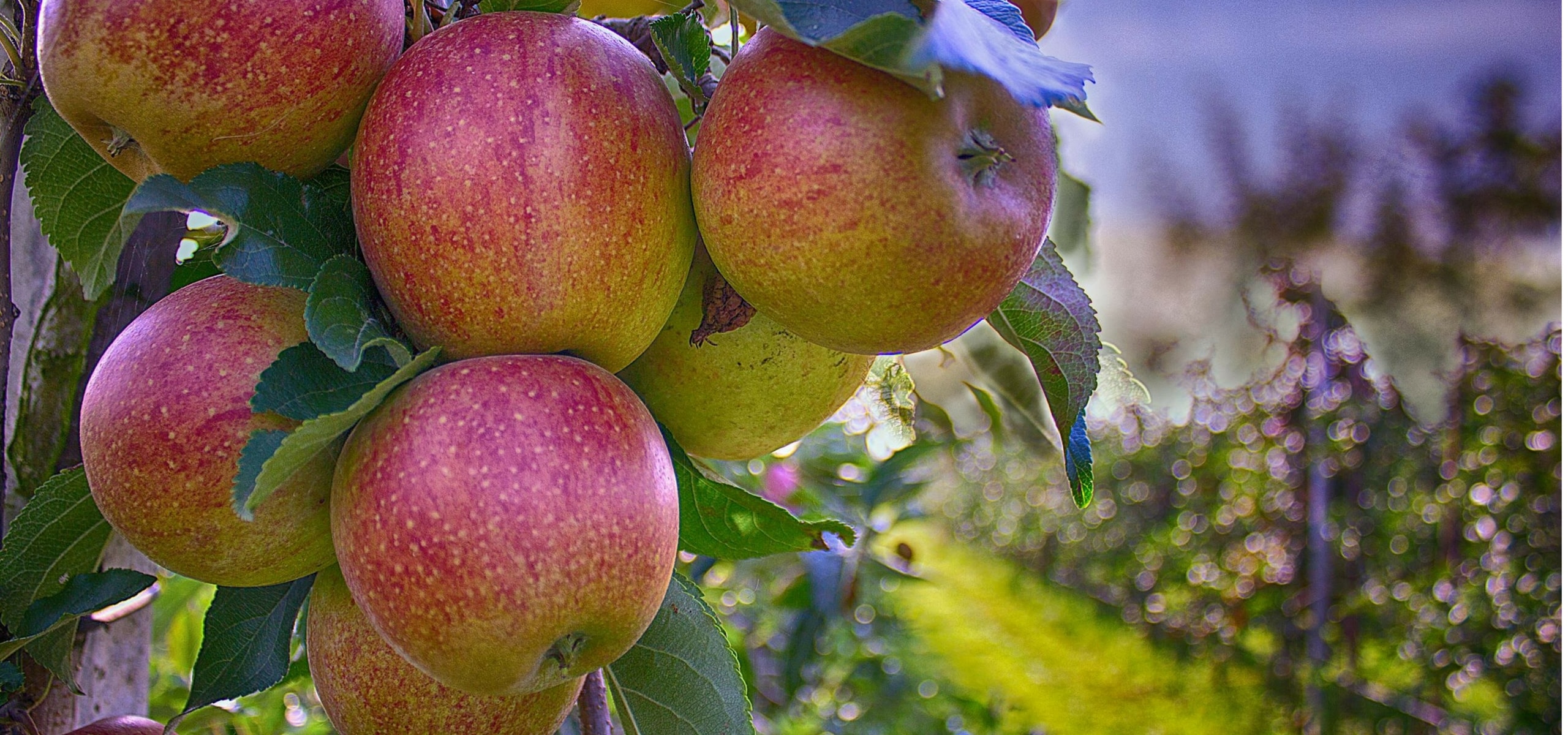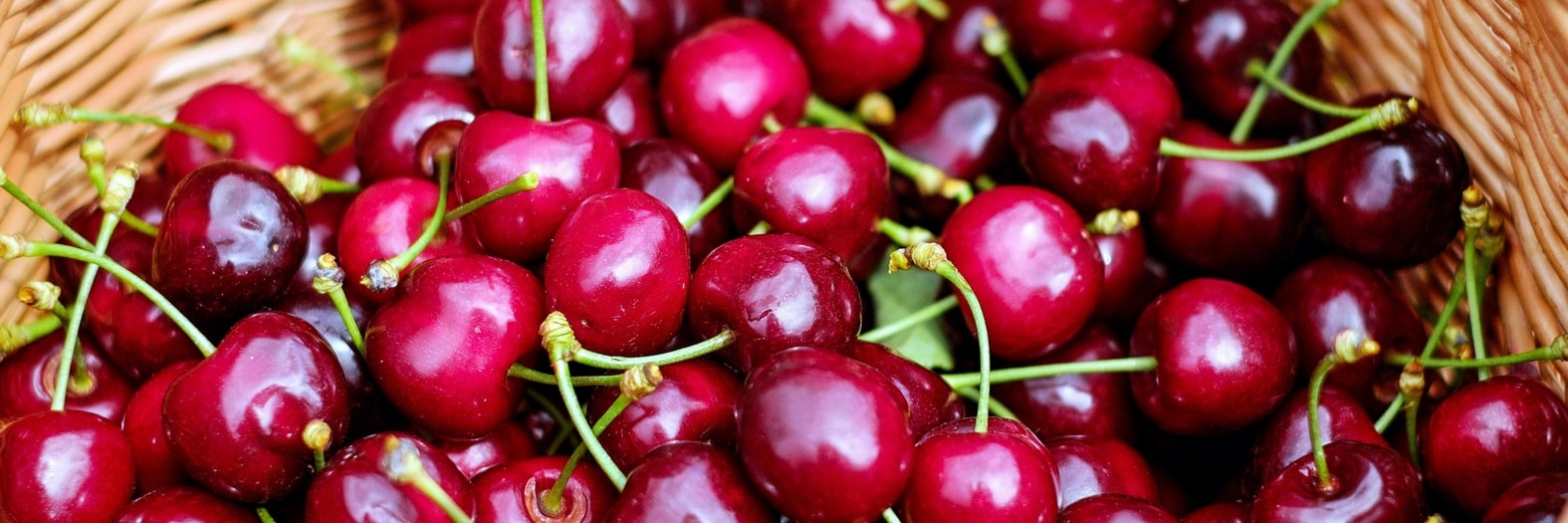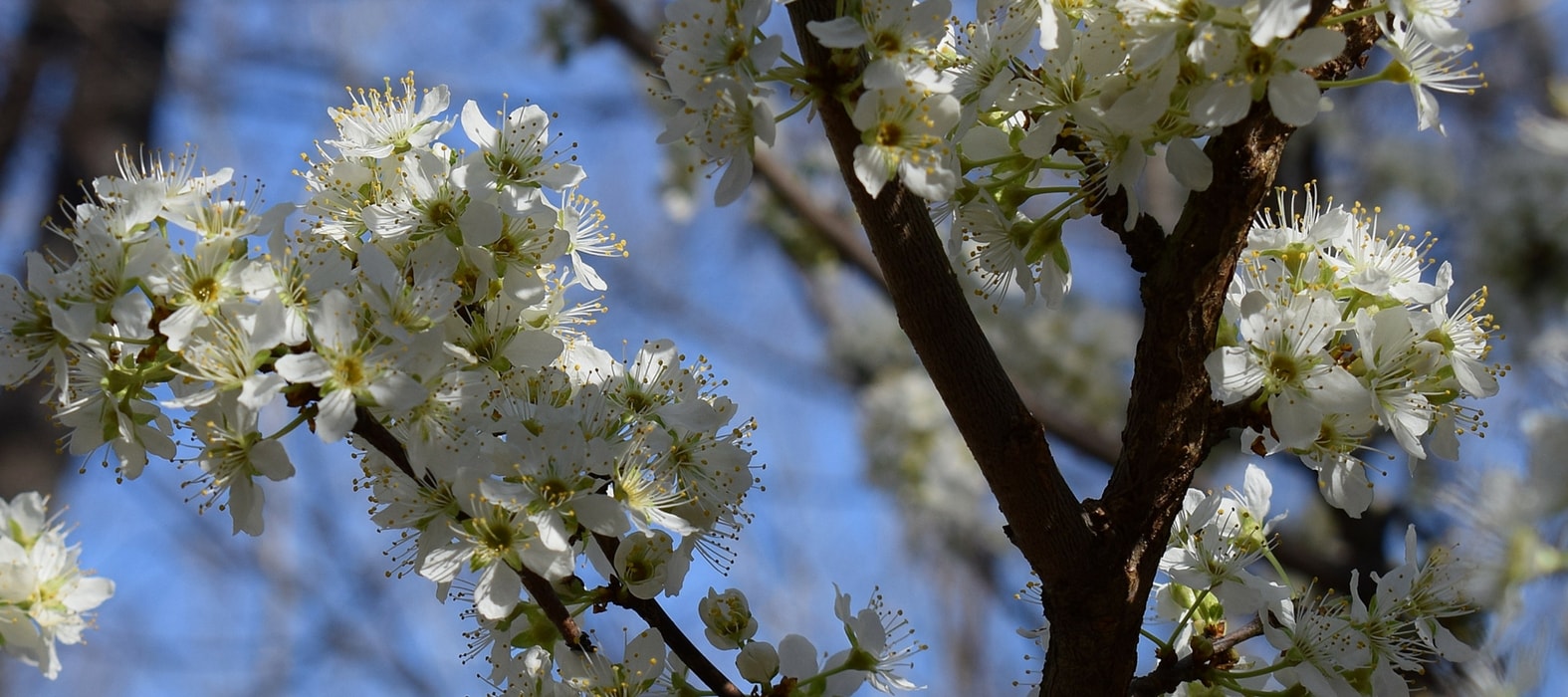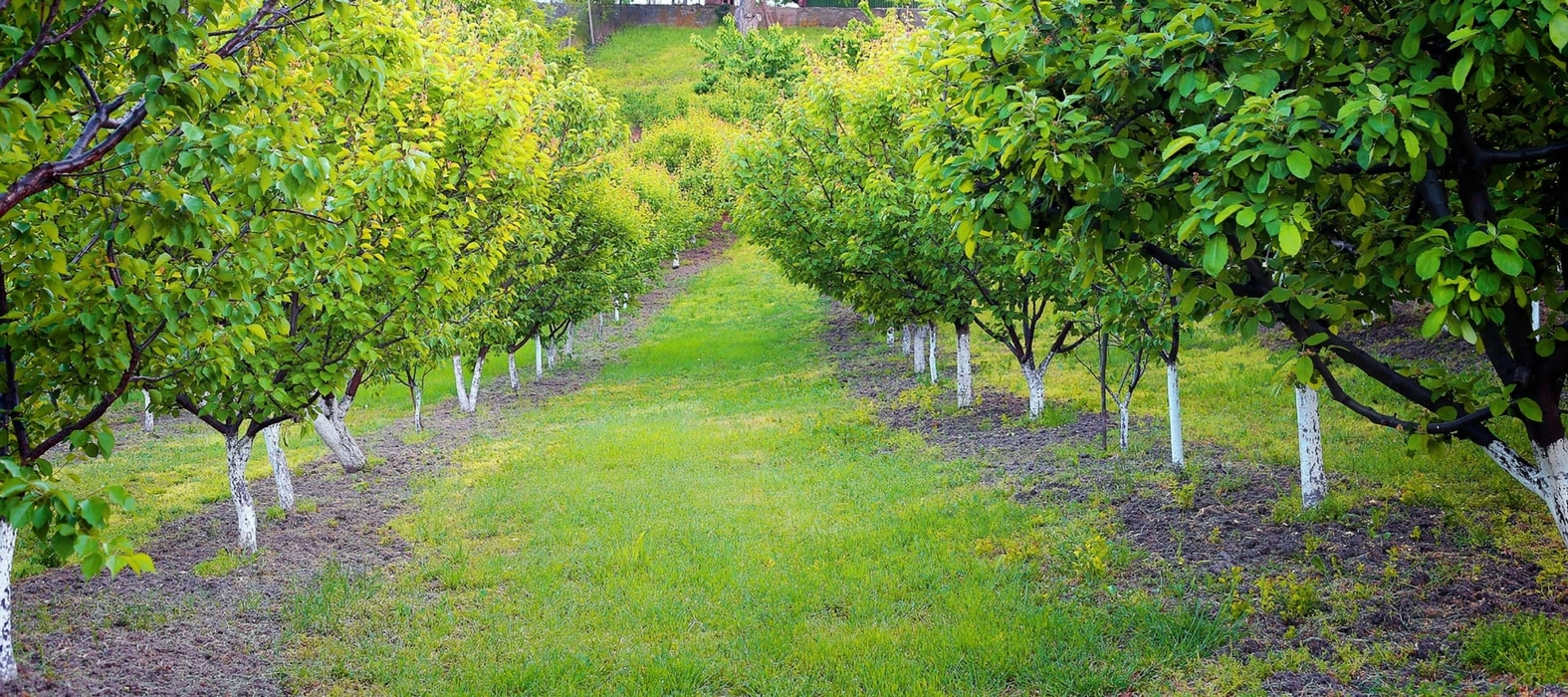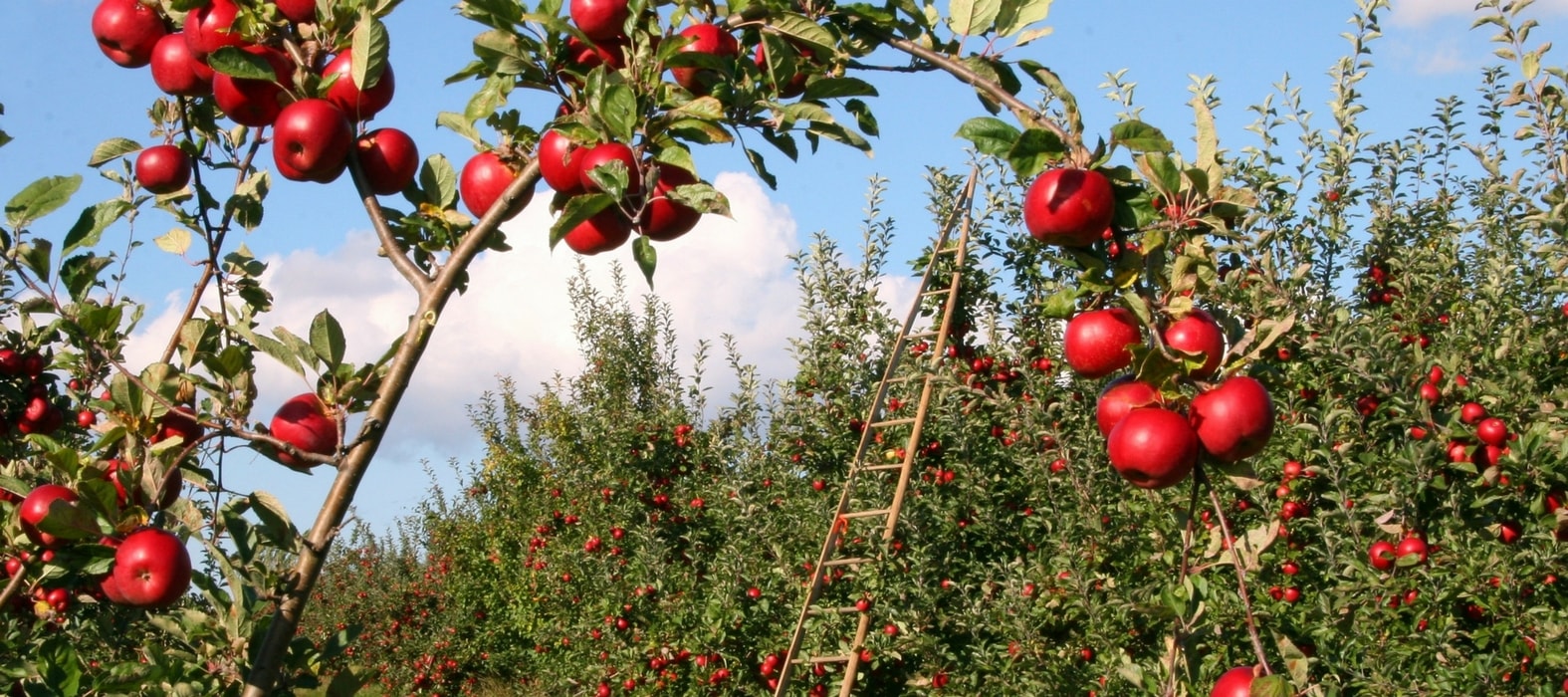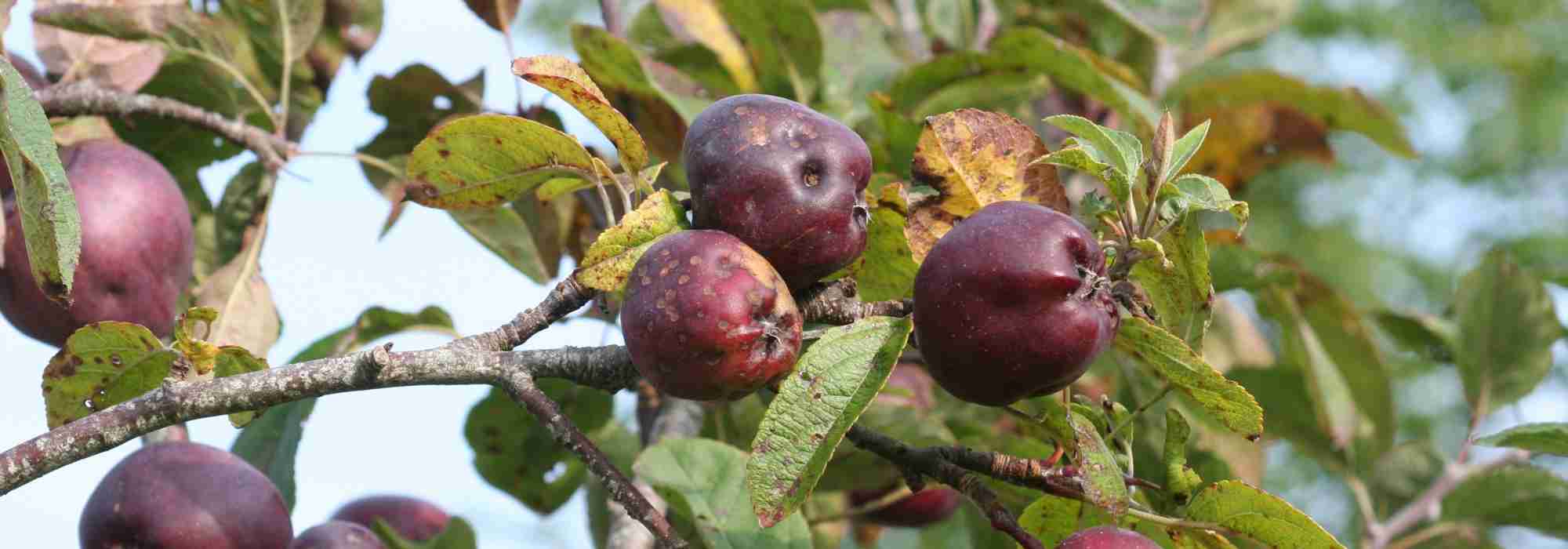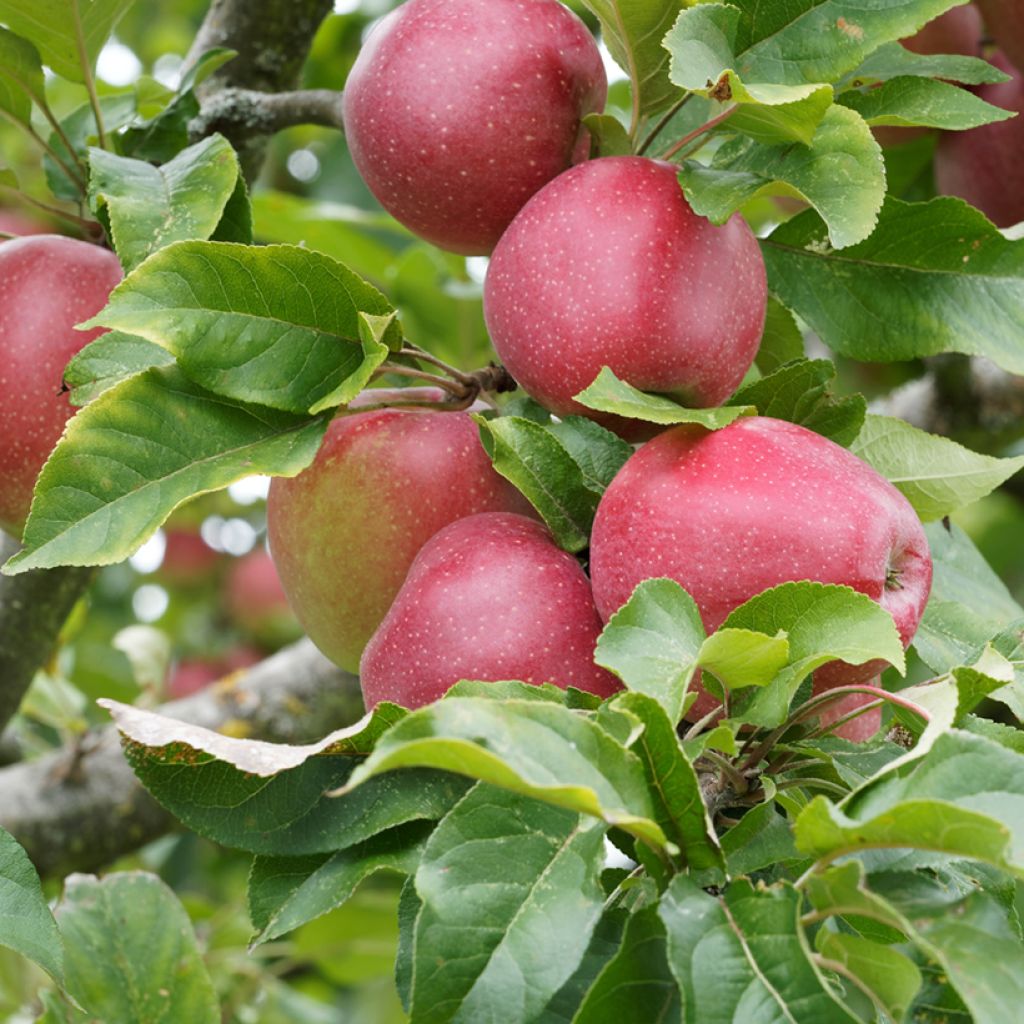

Malus domestica Rajka - Pommier domestique, Pommier commun
Malus domestica Rajka - Pommier domestique, Pommier commun
Malus domestica Rajka
Pommier domestique, Pommier commun
Why not try an alternative variety in stock?
View all →This plant carries a 6 months recovery warranty
More information
We guarantee the quality of our plants for a full growing cycle, and will replace at our expense any plant that fails to recover under normal climatic and planting conditions.
Description
The 'Rajka' Apple Tree Apple Tree is a Czech-origin variety selected for its disease resistance, particularly to powdery mildew and scab, as well as for the flavour qualities and the size of its fruit. A moderately vigorous tree, it is firstly appreciated for its beautiful single white-pink blossom that brings joy to the garden in mid-spring. The flowers then develop into large apples with a yellow base epidermis largely covered by a bright red, highly decorative hue. The creamy-yellow flesh is crunchy, juicy, and very sweet, with a slightly tangy note. This apple can be enjoyed fresh but also in desserts and makes delicious juices. Partially self-fertile, it is preferable to plant this apple tree near another variety to ensure good flower fertilization.
The Apple Tree, like most of our temperate and Mediterranean climate fruit trees (Apricot, Raspberry, Pear...) belongs to the vast Rosaceae family. The genus Malus is divided between fruiting species, such as the Common Apple (Malus domestica, synonym Malus communis or Malus pumila), and ornamental species, the 'Flowering Crabapples', like the stunning Malus 'Liset'. Cultivated since Roman times and even earlier, the Apple Tree is a fruit tree native to the forests of Central Asia, now available in nearly 20,000 varieties.
The Malus domestica 'Rajka' is a cultivar from the experimental centre in Střížovice, Czech Republic. Developed in 1983, this variety is a cross between the 'Sampion' and the 'Katka'. The former was already a creation by the same Czech centre, blending the famous 'Golden Delicious' and 'Cox's Orange Pippin' to achieve scab resistance, while the latter, derived from crossing the 'Jolana' and 'Rubin', incorporates a scab resistance gene from the botanical species Malus floribunda 821. Needless to say, with such a lineage, the 'Rajka' is extremely resistant to apple scab and also less susceptible to powdery mildew, making it an attractive variety for enthusiasts and organic growers.
The tree exhibits moderate vigour, forming a spherical, well-branched crown, and can reach a mature height of 6 m with a spread of 4 m. The foliage is light to medium green, consisting of 8 cm-long, ovate leaves with pointed tips, finely dentate edges, and a slightly rough surface. Its blossoming, which occurs in April-May, has a romantic charm, with small, single white-pink flowers attracting bees and other pollinating insects. These can ensure the self-pollination, albeit imperfect, of the flowers. It is better to make sure to plant another variety nearby whose pollen will fertilise the blossom more effectively. The following varieties can fulfil this role: the 'Melrose', 'Goldstar', 'Rosana', 'Topaz', 'Ingrid Marie', 'Ontario', 'Roter Jonathan', 'Esopus Spitzenburg', or even the 'Idared'. Once fertilised, the flowers gradually develop into large fruits reaching 8 to 9 cm in diameter at maturity, i.e., by late September. The initially yellow epidermis turns a highly aesthetic and attractive bright red. The greeny-yellow to creamy-yellow flesh is crunchy, even sweeter than that of the 'Elstar' variety, sometimes with a slight strawberry note inherited from one of its distant ancestors. A subtle tangy touch further enhances the flavour of this delicious, juicy, and aromatic fruit. The yield is generally high, further increasing its appeal.
The 'Rajka' Apple Tree combines many advantages: good hardiness, very low disease susceptibility, abundant yield, large tasty fruit that stores well, and even the aesthetic appeal of the apples. A bit bulky for small gardens, it more than earns its place in slightly larger plots, where you can plant other fruit trees alongside it. A White Vine Peach will provide round, orange-yellow fruits with sweet, tender flesh in September. This variety also has the advantage of being self-fertile. For later harvests in the year, you can rely on the Persimmon, a tree with glossy leaves and uniquely flavoured orange fruits. To extend the harvest season into summer, you could plant a Bigarreau Cherry 'Hedelfingen' which will delight you with its dark red, crack-resistant cherries, whose flesh is both firm and juicy—a true treat!
Plant habit
Fruit
Flowering
Foliage
Botanical data
Malus
domestica
Rajka
Rosaceae
Pommier domestique, Pommier commun
Cultivar or hybrid
Other Apple trees
View all →Planting and care
Choose a sunny spot for your 'Rajka' apple tree; the soil can be slightly chalky or acidic, but not excessively so. Dig a wide planting hole at least three times the size of the root ball. Add organic matter (compost, potting soil, etc.) and a base fertiliser like crushed horn at the same time. Do not bury the graft junction. Stake if necessary. For apple trees planted in isolation and exposed to wind, it may be beneficial to stake them using a guy-wire system: plant three stakes in a triangle 50 cm around the trunk and join them with pieces of wood. Protect the bark with a piece of rubber, for example, and attach the stakes to the trunk with metal wires. Water generously, even in winter and even if it rains. Fruit trees are ideally planted between October and March, avoiding frost periods. Container-grown young plants can be planted year-round, except during extreme heat or frost.
In winter, you can add a small spadeful of wood ash rich in potash at the base of the tree, lightly worked into the soil surface, to improve fruiting. Apple trees can be susceptible to various diseases and pests. To minimise risks, space trees sufficiently, plant multi-species hedges, and affix nesting boxes or insect shelters to attract beneficial wildlife. In short: prioritise diversity. The main diseases affecting apple trees are scab (brown spots on the leaves), brown rot (wilting of flowers and fruit rot on the tree), and powdery mildew (white felting on the leaves). For these three cases, preventive action is best, such as spraying a horsetail decoction. As a last resort during severe outbreaks, a curative treatment like a Bordeaux mixture can be applied. Fortunately, the 'Rajka' is resistant to scab and powdery mildew, so frequent treatment won’t be necessary.
As for pests, the codling moth (or fruit worm) is a small caterpillar hatched from a butterfly’s egg which burrows into the fruit. To combat this, it’s best to act preventively by encouraging blue tits and bats with nesting boxes. In case of aphid infestations, spray a solution of black soap.
For optimal storage after harvest in September-October, place the apples with their peduncle facing downwards in crates or trays. Choose a location that is completely dark, dry, and cool but frost-free. Protected this way, the fruit will keep until March.
Planting period
Intended location
Care
Planting & care advice
This item has not been reviewed yet - be the first to leave a review about it.
Haven't found what you were looking for?
Hardiness is the lowest winter temperature a plant can endure without suffering serious damage or even dying. However, hardiness is affected by location (a sheltered area, such as a patio), protection (winter cover) and soil type (hardiness is improved by well-drained soil).

Photo Sharing Terms & Conditions
In order to encourage gardeners to interact and share their experiences, Promesse de fleurs offers various media enabling content to be uploaded onto its Site - in particular via the ‘Photo sharing’ module.
The User agrees to refrain from:
- Posting any content that is illegal, prejudicial, insulting, racist, inciteful to hatred, revisionist, contrary to public decency, that infringes on privacy or on the privacy rights of third parties, in particular the publicity rights of persons and goods, intellectual property rights, or the right to privacy.
- Submitting content on behalf of a third party;
- Impersonate the identity of a third party and/or publish any personal information about a third party;
In general, the User undertakes to refrain from any unethical behaviour.
All Content (in particular text, comments, files, images, photos, videos, creative works, etc.), which may be subject to property or intellectual property rights, image or other private rights, shall remain the property of the User, subject to the limited rights granted by the terms of the licence granted by Promesse de fleurs as stated below. Users are at liberty to publish or not to publish such Content on the Site, notably via the ‘Photo Sharing’ facility, and accept that this Content shall be made public and freely accessible, notably on the Internet.
Users further acknowledge, undertake to have ,and guarantee that they hold all necessary rights and permissions to publish such material on the Site, in particular with regard to the legislation in force pertaining to any privacy, property, intellectual property, image, or contractual rights, or rights of any other nature. By publishing such Content on the Site, Users acknowledge accepting full liability as publishers of the Content within the meaning of the law, and grant Promesse de fleurs, free of charge, an inclusive, worldwide licence for the said Content for the entire duration of its publication, including all reproduction, representation, up/downloading, displaying, performing, transmission, and storage rights.
Users also grant permission for their name to be linked to the Content and accept that this link may not always be made available.
By engaging in posting material, Users consent to their Content becoming automatically accessible on the Internet, in particular on other sites and/or blogs and/or web pages of the Promesse de fleurs site, including in particular social pages and the Promesse de fleurs catalogue.
Users may secure the removal of entrusted content free of charge by issuing a simple request via our contact form.
The flowering period indicated on our website applies to countries and regions located in USDA zone 8 (France, the United Kingdom, Ireland, the Netherlands, etc.)
It will vary according to where you live:
- In zones 9 to 10 (Italy, Spain, Greece, etc.), flowering will occur about 2 to 4 weeks earlier.
- In zones 6 to 7 (Germany, Poland, Slovenia, and lower mountainous regions), flowering will be delayed by 2 to 3 weeks.
- In zone 5 (Central Europe, Scandinavia), blooming will be delayed by 3 to 5 weeks.
In temperate climates, pruning of spring-flowering shrubs (forsythia, spireas, etc.) should be done just after flowering.
Pruning of summer-flowering shrubs (Indian Lilac, Perovskia, etc.) can be done in winter or spring.
In cold regions as well as with frost-sensitive plants, avoid pruning too early when severe frosts may still occur.
The planting period indicated on our website applies to countries and regions located in USDA zone 8 (France, United Kingdom, Ireland, Netherlands).
It will vary according to where you live:
- In Mediterranean zones (Marseille, Madrid, Milan, etc.), autumn and winter are the best planting periods.
- In continental zones (Strasbourg, Munich, Vienna, etc.), delay planting by 2 to 3 weeks in spring and bring it forward by 2 to 4 weeks in autumn.
- In mountainous regions (the Alps, Pyrenees, Carpathians, etc.), it is best to plant in late spring (May-June) or late summer (August-September).
The harvesting period indicated on our website applies to countries and regions in USDA zone 8 (France, England, Ireland, the Netherlands).
In colder areas (Scandinavia, Poland, Austria...) fruit and vegetable harvests are likely to be delayed by 3-4 weeks.
In warmer areas (Italy, Spain, Greece, etc.), harvesting will probably take place earlier, depending on weather conditions.
The sowing periods indicated on our website apply to countries and regions within USDA Zone 8 (France, UK, Ireland, Netherlands).
In colder areas (Scandinavia, Poland, Austria...), delay any outdoor sowing by 3-4 weeks, or sow under glass.
In warmer climes (Italy, Spain, Greece, etc.), bring outdoor sowing forward by a few weeks.


































